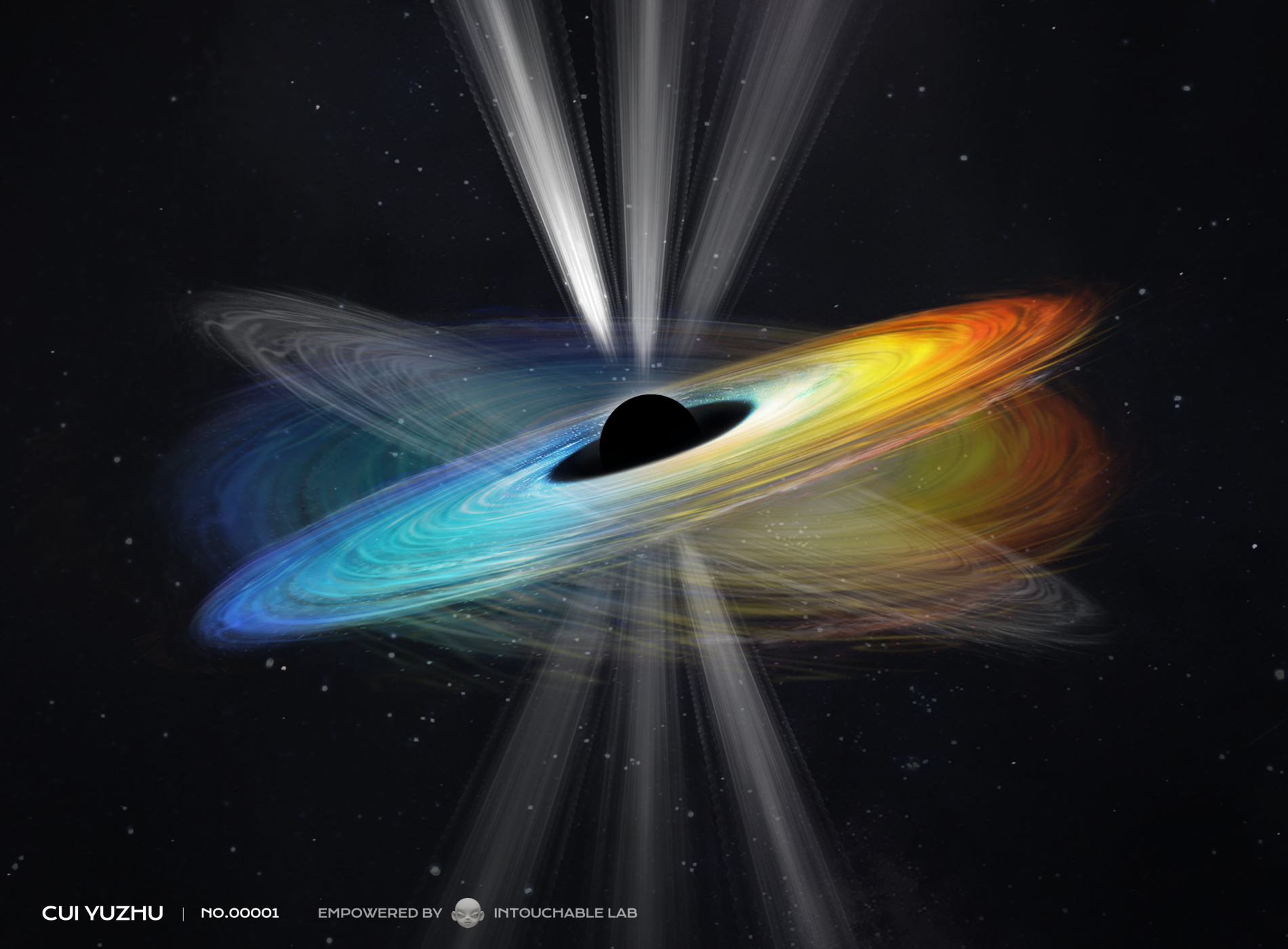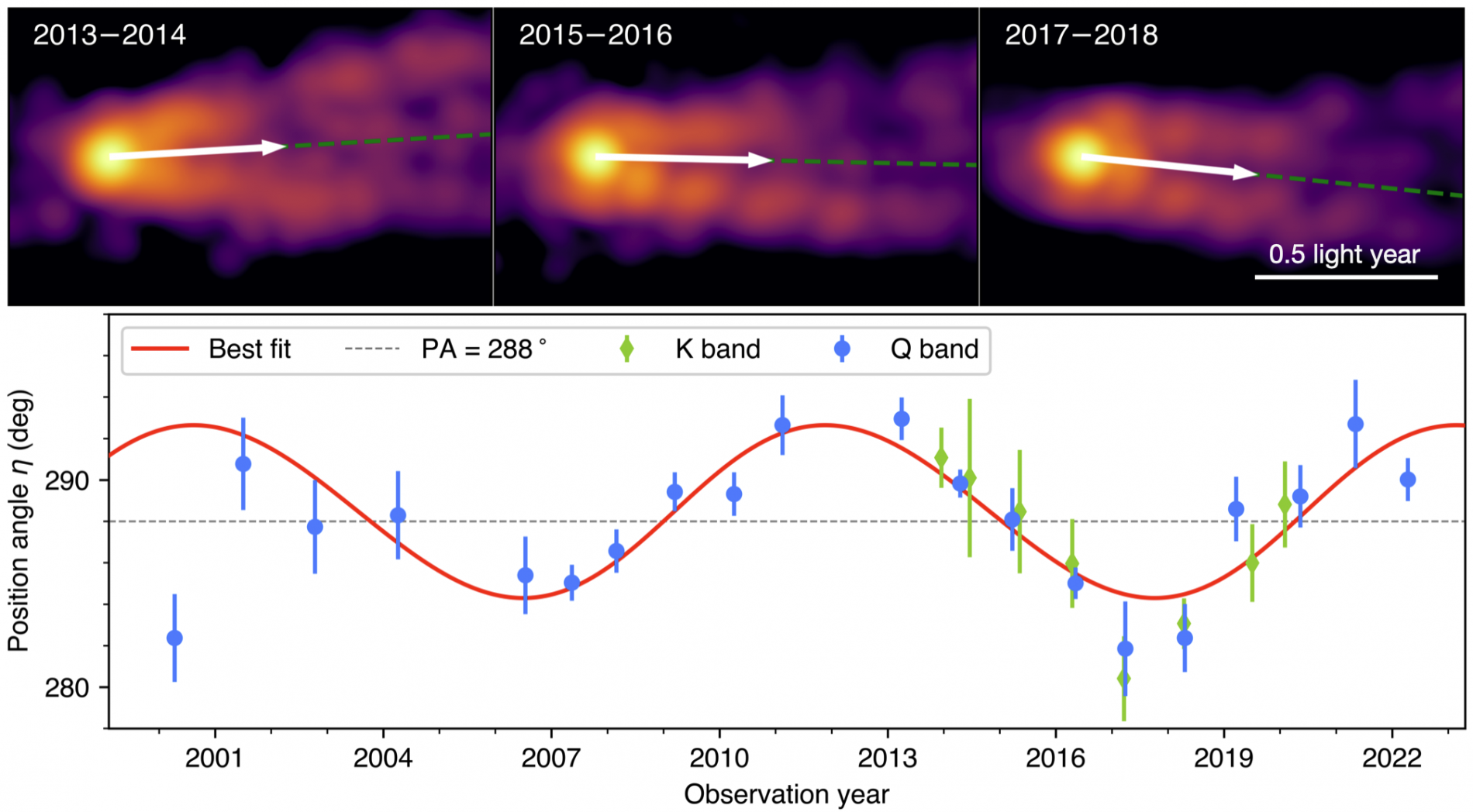Two decades of observing galaxy M87 show an oscillating jet connected to a rotating black hole
The Institute of Astrophysics of Andalusia (IAA-CSIC) participates in the 23-year follow-up of the central supermassive black hole of the galaxy M87. The study reveals that the jet emerging from the centre oscillates, which in turn provides the first evidence of rotation of a supermassive black hole
An international scientific team, with the participation of the Institute of Astrophysics of Andalusia (IAA-CSIC), has analysed 23 years of data from the centre of the galaxy M87, home to a black hole 6.5 billion times more massive than the Sun. The results, published in Nature, reveal that the jet emerging from the black hole at very high speed oscillates up and down with an amplitude of about ten degrees, which in turn confirms that the black hole is rotating.
Black holes suck in huge amounts of material due to their gravitational pull, so powerful that even light cannot escape them, and propel a jet-like flow of plasma that moves almost at the speed of light and spans vast distances. The galaxy M87, for example, has a jet that emerges from its central regions and extends far beyond the size of the galaxy itself.
However, the mechanism of energy transfer between supermassive black holes, accretion disks and jets is still unknown. The prevailing theory suggests that energy can be extracted from a rotating black hole, allowing some of the material surrounding the black hole to be ejected at high speed. However, the rotation of supermassive black holes, a crucial factor in this process and the fundamental parameter besides black hole mass, has never been directly observed.
The research team's analysis, which includes a comparison with a state-of-the-art theoretical simulation, indicates that the accretion disk's rotation axis misaligned with the black hole's spin axis, generating an oscillating, or precessing, jet. The detection of this precession constitutes unequivocal evidence that the M87 supermassive black hole is indeed rotating, opening up new dimensions in our understanding of the nature of these objects.

“Since the misalignment between the black hole and the disk is relatively small and the precession period is around eleven years, the accumulation of high-resolution data of the structure of M87 over two decades and comprehensive analysis have been essential to achieve this achievement,” says Yuzhu Cui, a researcher at the Zhejiang Laboratory and lead author of the article.
At the heart of this discovery is the critical question: what force in the universe can alter the direction of such a powerful jet? The answer could lie in the behavior of the accretion disk: as infalling materials orbit the black hole, they form a disk structure before gradually spiraling until they are absorbed by the black hole. However, if the black hole rotates, it exerts a significant impact on the surrounding space-time, causing nearby objects to be dragged along its axis of rotation, that is, producing the "frame dragging" predicted by Einstein's General Relativity.
“This work has analyzed a total of 170 epochs of observations obtained by the East Asian VLBI Network (EAVN), the Very Long Baseline Array (VLBA), the joint network of KVN and VERA (KaVA) and the East Asia to Italy Nearly Global Network (Eating). In total, more than twenty telescopes and forty-five institutions around the world contributed to the study. Only close collaboration has allowed us to obtain these fascinating results”, says Ilje Cho, a researcher at the Institute of Astrophysics of Andalusia (IAA-CSIC) who participates in the work.
While this study sheds light on how a supermassive black hole works, it also presents big unknowns. The disk structure and exact value of the spin of the supermassive black hole M87 are still uncertain, and this work also predicts that there are more sources involved in this configuration, which adds new challenges.

Y. Cui et al. "Precessing jet nozzle connecting to a spinning black hole in M87". Nature, Sept 2023. https://doi.org/10.1038/s41586-023-06479-6
Instituto de Astrofísica de Andalucía (IAA-CSIC)
Unidad de Divulgación y Comunicación
Silbia López de Lacalle - sll[arroba]iaa.es - 958230676
https://www.iaa.csic.es
https://divulgacion.iaa.csic.es

